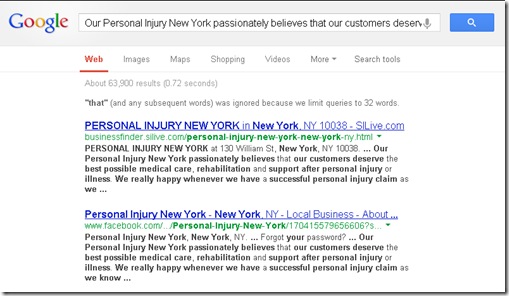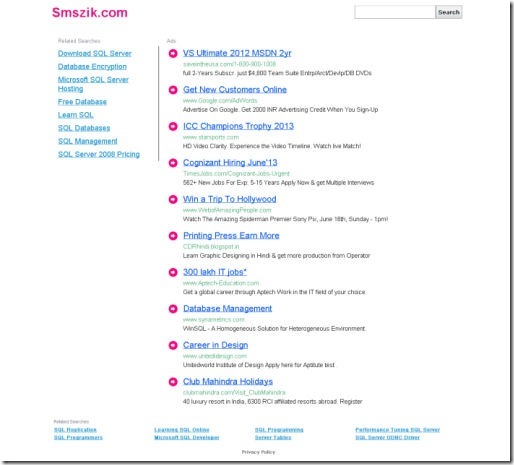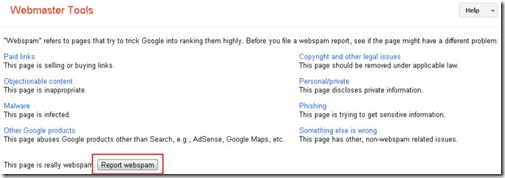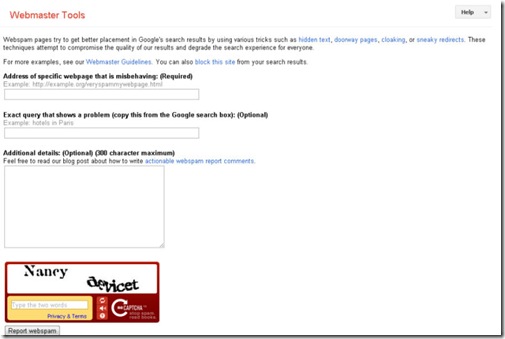In the search engine world the spam word is very common. What exactly does “spam” mean? It is an unethical technique to increase the search engine ranking of your web page by violating search engine terms and policies. Different search engines have their own guidelines which we need to follow to get a better rank in that particular search engine. Google, Yahoo, Bing etc. have their own list of quality guidelines. In the search engine world people are following spammy techniques like links hiding, cloacking, link farming, keywords stuffing, thin content and much more. But nowadays search engines like Google are trying to penalize them with different algorithmic updates like Panda, Penguin, Exact Match Domain (EMD) and a few more.
Spam in Terms of Google
For a long time Google’s web spam team is trying to get spam free SERP results to their users and for that they have implemented Google quality guidelines which will help webmasters to create such websites and get better user experience and ranking in SERP. There is a list of techniques which Google considers as spam. A few of them are listed below.
- Hidden text and Keyword stuffing
- Unnatural links to your sites
- User generated spam
- Thin content
- Parked domain
- Cloaking/sneaky redirection
- Hacked sites
For using certain technique many sites are penalized and drop in ranking or they might even not be visible in SERP for keyword terms and phrases after Google’s recent Panda and Penguin updates. Google has updated how search works; they have given a short description of spamming techniques and how their spam algorithm works to fight again spam. Now Google is providing live spam removal report of 1hr with live removal example.
1. Keyword Stuffing and Hidden Text
Keyword stuffing is a common practice followed by webmasters. It is defined as use of larger number of targeted keyword terms in your webpage in the hope that search engines find it more relevant and to get better ranking in SERP. Hidden Text is something like using same color text as your background or hiding your text with the same color as your background color. Some webmasters use images to hide their text behind that image. Recently, they used CSS based website to hide text and they will show that thing on mouse over or an onclick event.
2. Unnatural Links to Your Sites
Currently a large number of sites are affected by this type of spam. In this case Google will give you a message in your webmaster account like “Unnatural links to your sites.” There might be certain reasons behind these messages. Like you are buying links, excessive link exchange, getting links from unrelated sites, building partner pages for cross linking with others, using some automated services to develop links to your site. Let’s take an example of links that are inserted in an article.
“Travel to Thailand.You can buy cheap holidays online for Thailand. Visit Thailand at very cheap price.”
Here the webmaster is linking to keyword “Buy cheap holiday online” which is totally unnatural. For example, you are linking to low quality directory site means your site is related to travel industry and you are going to link back to it from some health related directory. This is an unnatural way of link building. If you got the message in your webmaster tool about unnatural links to your site, it might be that you are hit by one of the latest algorithms of Google. If you think you have been hit, here what you can do about it.
3. User Generated Spam
All spam is not done by webmaster or site owners but in the search industry some spam is generated by some other users. User generated spam is done on that site which allows users to create their own pages or add content on the sites. If you got a message from Google that your site is generating user generated spam that means you site is good; but some miscellaneous users generate spam on your site. These is commonly seen in sites related to forums, blogs with the help of blog comment and some other ways by which users can generate spam on your site.
4. Thin Content
After recent Google update (Panda) you might have heard the word thin content. What exactly does this word mean? In simple language, copying content from reputed sites in the belief that it will provide equivalent weightage in SERP or create the content which doesn’t added value to user and search engine. Here I am showing you one Example of a website: personalinjury-newyork.com who has lots of thin content. When you type below content in the Google search you get lots of results pages with the same content.
“Our Personal Injury New York passionately believes that our customers deserve the best possible medical care, rehabilitation and support after personal injury or illness. We are really happy whenever we have a successful personal injury claim as we know that it can provide the financial support that allows our clients to access these services.”
5. Parked Domain
Parked domains are domains which are registered but currently not in use. This means, “site under construction”. Google is penalizing parked domains as some webmasters in the search industry only use it to redirect traffic to their own domain and that violates Google’s quality guidelines. Some webmasters use that for Pay Per Click (PPC) purpose to show ads on parked domains. Mainly, webmasters are using these for the product based sites. Parked domain does not provide any value to users so Google will penalize it. Example of parked domain.
6. Clocking and sneaky redirection
Most of you in the search industry have heard the word clocking. Clocking is a method of showing different text or URLs to users and showing some different text and URLs to search engines to get better ranking in SERP. Webmasters who have performed clocking will provide different information to users and search engines and these violate Google’s quality guidelines. Clocking can be performed using different methods like IP based clocking, user agent clocking, JavaScript clocking and many more. For example, showing HTML text version of your website to search engine, but you are showing images or flash content to users.
Sneaky Redirection is something related to clocking. Here you are redirecting users to some other URLs instead of the original one. Generally webmasters do this with the help of JavaScript or any other medium, but it will violate Google’s quality guidelines. In these they will show different pages to users and search engines.
7. Hacked Sites
Hackers are one of biggest threats to the search industry. They will hack your website and insert malware in your sites for their personal benefit. Once you are hacked Google will show you a message — “This site may be compromised” in the search result.
But if you have registered your website in Google Webmaster tool then Google itself is sending you message. Hackers can do this thing mainly using different methods like redirecting users to their sites directly from search engines with the help of modifying server configuration file like .htaccess to show different content to users.
8. Pure Spam Site
How does Google define “pure spam” site? The site which violates Google Quality Guidelines and uses the above techniques is known as a spam site. If the site is pure spam site then there might be the possibility that Google will manually take action against you. Once your site is hit by the Google manual action you would get messages in Google Webmaster regarding this action. Google has taken many manual actions with the help of Google Panda and Penguin algorithm. Once you are hit by some manual action you can recover from it with the help of the reconsideration request to Google.
For Whom and How you can create Spam reports to Google
Now Google is providing a facility to their users to report spam sites. Users can file spam report forms against those who violate Google quality guidelines or are involved in things like paid links, copyright issues and many other reasons. Users only need to select the category for which they want to fill forms. Below is the screen shot of the category for which they want to generate the spam report.
Conclusion
In this post we have discussed certain spamming techniques. Check out your website and ensure that you are not using the above listed methods. Because if you are, then there is a possibility that if you have not been affected by Google’s recent updates, it is most likely that you will in the forthcoming updates in 2013. In my view by avoiding these techniques and focusing on what matters for SEO in 2013, you should be safe from any of Google’s algorithm updates.
I hope you liked this article. You are welcome to give your suggestions and new ideas by way of comments.









![Depositphotos: High-quality Stock Files, Vector images and Videos [giveaway]](https://www.iblogzone.com/wp-content/uploads/2013/07/depositphotos-vector-collection-150x150.jpg)




Comments are closed.